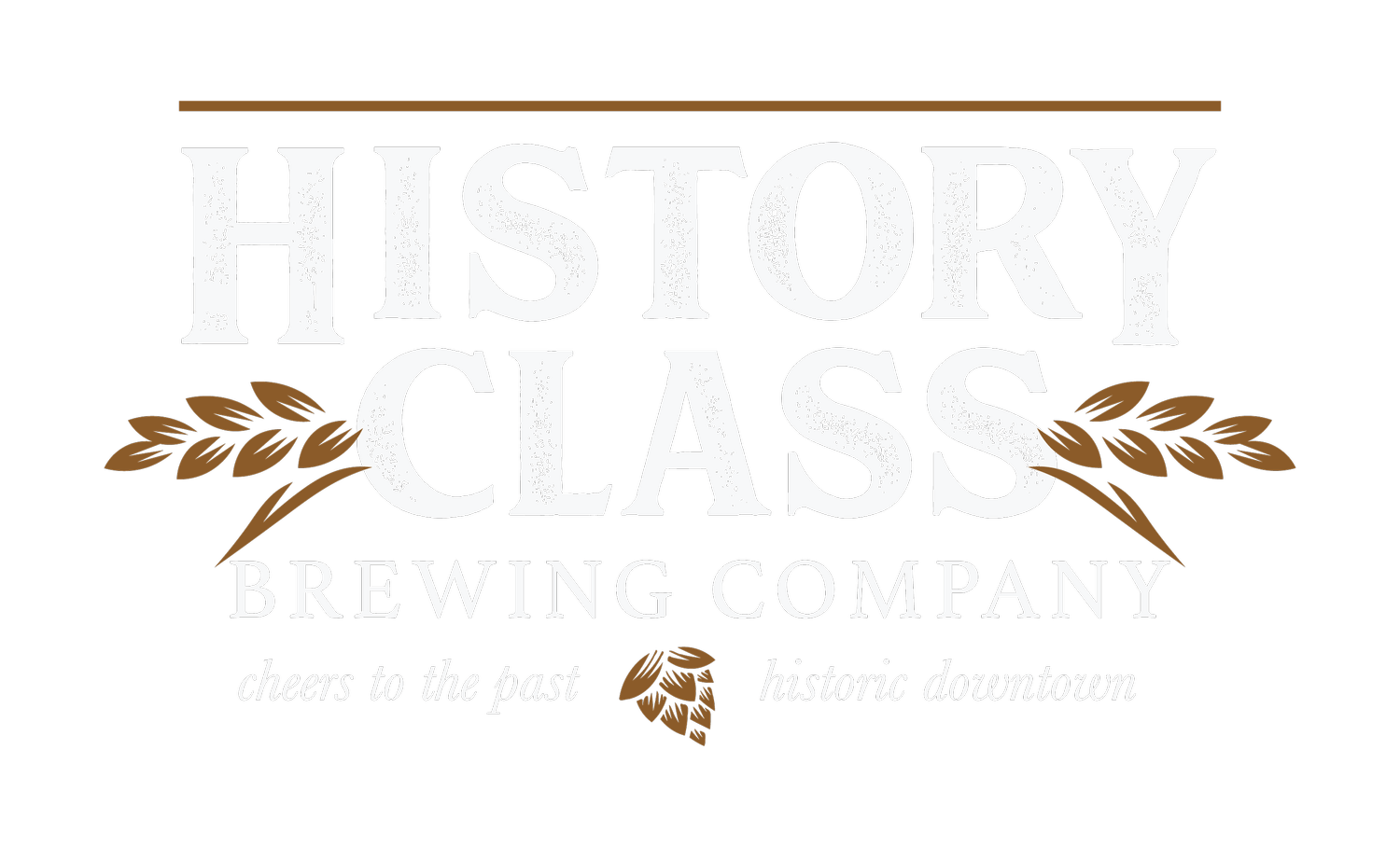
Take a Tour of our Brew Space

Look at all of the shiny stainless steel contraptions in front of you. This is where we make every drop of beer, seltzer, and cider that flows out of the 16 taps behind the bar. By the end of this little tour, you’re going to know what’s what and how this brewing system turns grain into fresh local beer. We’re going to travel from right to left through the brew space, so lock your eyes on the rightmost shiny object and read on.
The brewing process starts in the MashTun. We fill it with grain, hot Culligan filtered water, and cook it for a bit.This converts the grain’s starches into sugar or “Mash.” We then separate the grain and the liquid from each other. The liquid is called “Wort.”
Next, we transfer the Wort into the Whirlpool Kettle. This is where we boil the wort mostly for sterilization and use the whirlpool action to separate hop fragments and other solid particles from the Wort.
Now that the Wort is free of all of the chunks of stuff we don’t want to end up in our beer we transfer it into the Cellar. No, we do not have a secret basement here at History Class but it would be cool if we did. The Cellar is essentially all of the vertical tanks you see to the left of the Whirlpool Kettle. These fermentation tanks shaped like cones on the bottom called Unitanks and are used for fermenting, clarifying, and carbonating beer.
From adding grain to the Mash Tun to finally pitching yeast into the fermentation tanks takes about 8 hours. Each batch of beer we brew is equivalent to about 860 pints of beer because fine folks like you love beer and we love brewing it.
If you look up above the Cellar you will see the Boyette & Casey Hardware Co. store sign. The right portion that reads “HARDWARE Co.” is 100% authentic. The left portion is an artist’s recreation of the original sign. It’s a Boyette & Casey family heirloom and they’re keeping it safe at home.
From 1958 to 2018, Boyette & Casey was Bay County’s oldest hardware store. Local contractors, handymen, and many a weekend home project found excellent customer service and all of the tools and parts they needed to get the job done at our local hardware store.
The traffic light hanging above the brew space was actually used here in Downtown Panama City. It doesn’t have a yellow light, only red and green. Stop or go, that’s it.
If you do an about-face you will see our beautiful Cypress topped bar. Hurricane Michael claimed this tree when the Cat 5 storm ripped through our town. The tree had been minding its own business and growing strong on our good friend Aaron Rich’s family’s property near Lynn Haven. He donated the tree to History Class and now is has a new life surrounded by good beer and happy people.
The transom of the Margie Ann is the centerpiece of the bar and a fitting homage to the fishing industry that helped build this town. It was donated to History Class by local charter fisherman Josh Sauls. He grew up fishing on this boat. His father was the captain and together they fished just about every nook and cranny of the Gulf of Mexico and beyond.
Above the bar, you can see a row of terracotta roof tiles. These were once part of the roof of the original city hall building which still stands across the street from History Class at 4th Street & Harrison Avenue. The building was built around 1925 and since its completion, it has been the center of local government, a jail, a police station, a fire station, and most recently the Panama City Center for the Arts.
Above the bar and on the adjacent wall near the brew space you will see two vintage TVs. At one point in our building’s history, it was Thompson’s Appliance Store. These old TVs were left behind when that business closed its doors for good. Now, these TVs play real historical footage from Panama City’s early years all the way up to the early 90s.
Now, if you’re up for it let’s get nerdy with what’s going on inside of the big tanks. Fermentation and getting the beer to look just right ranges from 10 to 90 days. Variables affecting this time period include the following.
Yeast: How long will it take for the yeast to consume all the sugar, die, and fall into the cone at the bottom of the tank where they are removed from the beer? Some strains of yeast eat faster or slower than others.
Dry Hopping: Sometimes we add hops into a fermentation tank instead of adding it to the Whirlpool Kettle process. It takes extra time for cold beer to extract hop components and fall out of the beer like the yeast we mentioned earlier.
Clearing: Some beers are designed to be clear. Because all our beer is unfiltered, we have to wait for all of the yeast and hops to fall out of the beer thus making it clear.
Carbonation: It takes time for CO2 to carbonate the beer. Sometimes we let our beers carbonate naturally. This means that we allow co2 released by the yeast to carbonate the beers.
This concludes our tour of the History Class brew space. We “hopped” you enjoyed the ride. Sorry for the cringy beer humor. Cheers!











